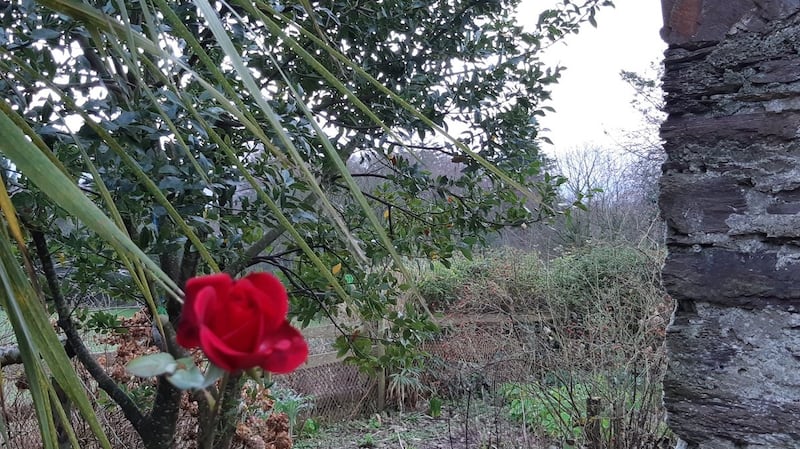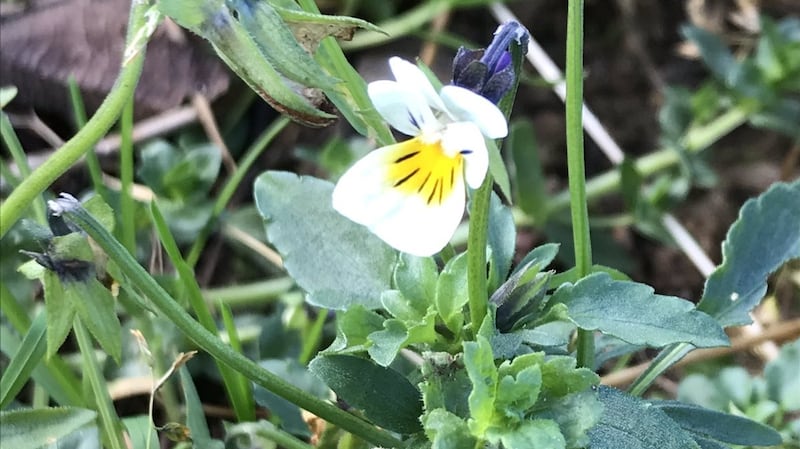To paraphrase Bob Dylan, you don't need to be a weatherman to know that we are experiencing an extraordinarily mild winter. And the evidence is not hard to find. Daffodils in bloom early have become a perennial reminder than many of our winters are turning into early spring, but butterflies are another matter.
On Thursday marine scientist Patrick Lyne spotted some Painted Lady butterflies on a headland west of Castletownbere, Co Cork.
(Do you have pictures showing our mild winter? Send them to us here for inclusion later)
Painted Lady butterflies in January are supposed to be either dead or overwintering in north Africa (they are a migratory species). They are not supposed to be in Ireland in January.
“What impressed me was the number of butterflies,” he said having counted approximately 20. “It struck me as extremely odd to see so many of them. It wasn’t just that the day I took the photographs was mild, but the whole winter was mild.”
The Butterfly Ireland website states that Painted Ladies are seen in Ireland from June to September and “they do not survive Irish winters in any stage”.
And yet Mr Lyne’s sighting was not even the first of the year. Abi Brewer in West Cork posted photographs of two Painted Lady butterflies in her garden on New Year’s Day.
Butterfly Conservation Ireland spokesman Jesmond Harding said the Painted Lady butterfly usually leaves Ireland in the first half of September to migrate south.
He believes the Painted Ladies found in Castletownbere are mostly migrants from continental Europe who have flown north because of the unusually lengthy nature of the mild conditions.
“You occasionally get sightings of the occasional Painted Lady along the south coast, but a sighting of this number of Painted Ladies so early in the year is unprecedented,” he said.
“However, 20 years ago this wasn’t happening. It’s only since the beginning of the 21st century that you are seeing this. It is hard to see how this is not a consequence of global warming. All butterflies are cold blooded animals. They need heat to remain active.”
He also believes the mild weather may contribute to the fact the creeping thistle, which is their principal source of food, has not died back as they usually do in the winter and there may still be some available in southern coastal area.
There are multiple examples of nature going haywire this year. Photographs have been taken of roses in bloom and cherry trees blossoming. There have been reports online of people cutting their grass and birds building nests three months earlier than is normal.

The sense of public bewilderment is summed up in a tweet from the novelist Patricia Scanlon: "Daphne bloomed 3 weeks early. Orange Blossom has bloomed continuously all year. Dafs are up! Birds singing morning, noon, night. (2am last night)."
Zoologist Collie Ennis has said frogs and newts are supposed to be hibernating, but they are not because the cold weather which signal their turn to go to sleep has not arrived.
“They are burning off energy for spawning and their fat reserves. This is a real example of climate change on our doorstep and how it is affecting our native wildlife,” he warned.
“The frogs and newts are out and about when they should be asleep. The problem is that there are no bugs about for them to eat. It’s the second year we have noticed it, but it is more severe this year. A late cold snap could wipe out the breeding population and all the spawn they laid.
“I have seen crows, herons and pigeons starting to make nests in January. It’s not just the scientists who are noticing these phenomena. Conservationists and naturalists have been talking about this for a long time, but now the public is starting to notice.”

The latest figures from Met Éireann confirm what is obvious anecdotally. Soil temperature which are indicative of medium-term temperatures are far higher than normal for the time of the year especially along the west coast. Valentia in Co Kerry, Belmullet in Co Mayo and Oak Park in Co Carlow are all recording soil temperatures more than 3 degrees above normal for the time of the year.
Air temperatures are also substantially higher too - up to 2.5 degrees higher in many places for the first days of January. December was also extraordinarily mild with Sherkin Island in Co Cork recording a mean December temperature of 10.1 degrees, warmer than the average monthly temperature for April.
Met Éireann forecaster Harm Luijkx said the unusually mild winter is being caused by a slow moving area of high pressure which has settled over the country in recent weeks.
High pressure during winter usually brings bright, dry cold days and freezing nights, but not this winter.
“It is remarkable. The air flow is more southerly and there is no reservoir of cold air there. The cold air has to come from the east. There’s a lot of cloud at night which is keeping the temperatures up,” he said.
“There are no indications of extreme weather on the horizon though it is set to become more changeable.”
Mr Luijkx cautioned against the suggestion that the recent mild weather is down to global warning. "You can't say that about any particular weather event. It is impossible to pinpoint one event to climate change. Global warming means that it is not just warming, but that the weather patterns are going to change."










